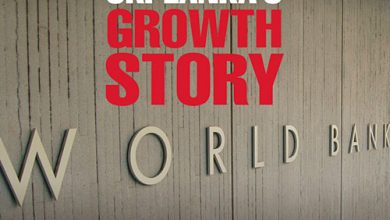
SUSTAINING THE MOMENTUM
Shiran Fernando notes that exports have grown but nworries about whether this trend is sustainable

The export of goods in 2021 rebounded and was higher than in 2019. In the first 11 months of 2021, exports rose by 22 percent compared to 2020 – and this value was two percent higher than in 2019.
In October and November last year, exports registered record monthly inflows. These inflows were above US$ 1 billion from June to November 2021 as well as in March.
So what were the key drivers of this export momentum and can the trend be sustained? Here are some pointers…
PRODUCTS Certain export products performed better last year. Apparel, which was the highest income earner in terms of exports, rebounded in 2021 – it grew by more than 20 percent compared to 2020 but was marginally lower than in 2019.
The industry is aiming to increase exports to eight billion dollars by 2025 from the current US$ 5-5.5 billion range.
 This growth is expected to be driven by stronger backward vertical integration of the supply chain such as setting up fabric processing parks in Eravur and other locations. Through these initiatives, the industry hopes to increase domestic value addition and raise the volume of exports to the EU under GSP+. It should also see greater investment flows to the country, given the need to set up fabric mills.
This growth is expected to be driven by stronger backward vertical integration of the supply chain such as setting up fabric processing parks in Eravur and other locations. Through these initiatives, the industry hopes to increase domestic value addition and raise the volume of exports to the EU under GSP+. It should also see greater investment flows to the country, given the need to set up fabric mills.
Meanwhile, tea exports grew by eight percent in the first 11 months of 2021 compared to 2020 but were slightly below the 2019 value. These exports didn’t fall sharply in 2021 relative to others due to the impact of the pandemic and slowdown in key markets.
The concern going forward is its ability to sustain production volumes, given the impact of the lack of fertiliser that was visible from May to November last year.
Rubber exports also performed well in 2021 and recorded over US$ 1 billion in export earnings by November. This record high was supported by an increase in rubber-based products such as tyres and medical gloves to name two.
The sector hopes to sustain this momentum and grow exports to three billion dollars by 2025. It is also expecting investments in value chain development – such as the proposed industrial zone in Horana for rubber-based manufacturing.
OTHER EXPORTS The exportation of other items also grew in 2021. This includes agricultural products, which supported overall export growth last year. In the first 11 months of last year, coconut-based products, spices and concentrates, processed foods and beverages, and seafood exports grew by 26 percent, 37 percent and 41 percent respectively compared to the same period in 2020.
Exports of diamonds, gems and jewellery, and electronics and electronic components also recovered in 2021, and matched 2019 levels. However, exports such as petroleum products fell last year and were much lower than 2020 levels.
KEY MARKETS The US, India and EU nations continued to drive Sri Lanka’s export trajectory. Exports to the US – which is Sri Lanka’s largest export market – grew by 22 percent in the first 11 months of 2021 on the back of the strength of apparel, rubber-based products, activated carbon, tea and cinnamon.
Exports to the UK, which is our second largest trading partner, were muted – with an uptick of only one percent during this period.
Notably, exports to India grew by 33 percent owing to increases in animal feed, pepper and woven fabrics to name a few.
Other EU markets such as Germany, Italy and the Netherlands that buy Sri Lankan apparel also showed a healthy rate of growth and recovery in 2021.
SERVICE EXPORTS According to the Export Development Board (EDB), the export of services grew by 28 percent to US$ 2.7 billion from January to November 2021.
These exports comprise ICT-BPM, construction and financial services, as well as transport and logistics. In the ICT-BPM services segment, the industry is aiming to increase its share of earnings to five billion dollars by 2025 from the current US$ 1.6-1.7 billion.
TRADE TOOLS The increase of key exports from Sri Lanka has been supported by the fast pace of recovery in crucial markets such as the US and EU.
However, it is uncertain whether this pace of recovery can be sustained in the medium to long terms as inflationary pressures bear down on these economies.
For instance, the US is witnessing its highest rate of inflation since the 1980s while the UK is experiencing a similar situation in over a decade. Supply chain constraints and higher freight rates have also added to the increase in inflation.
However, to maintain the momentum required and grow total exports beyond US$ 20 billion, the private sector will need better trade connectivity and facilitation while retaining existing concessions such as GSP+ from the EU.
And greater trade-led investments must be secured through the development of skills and promotion of SME exporters.






